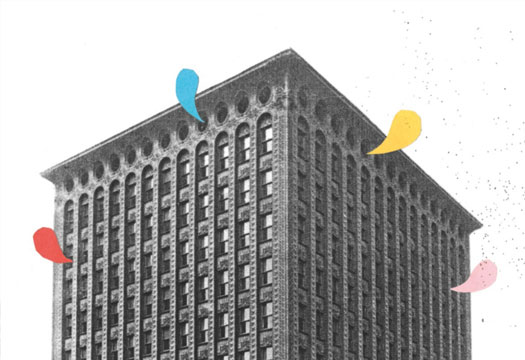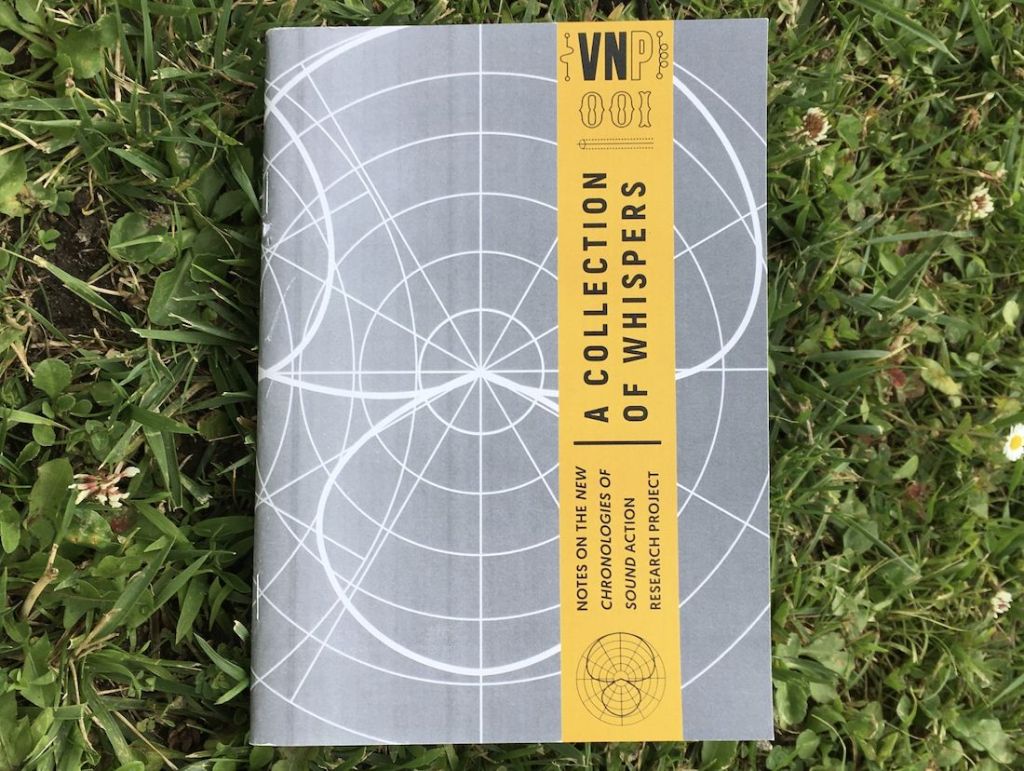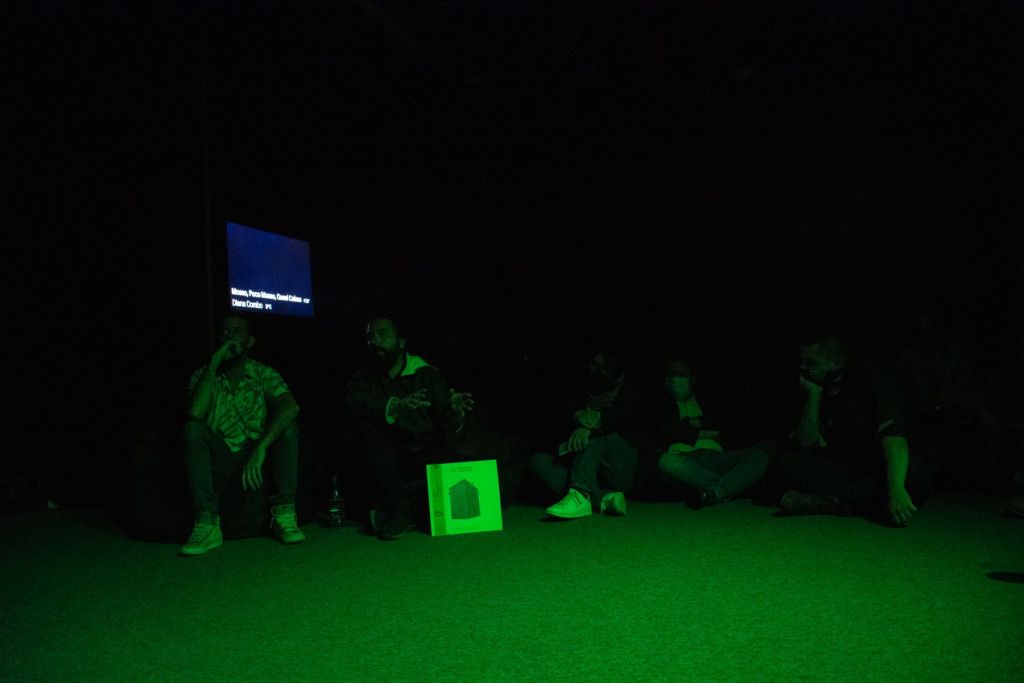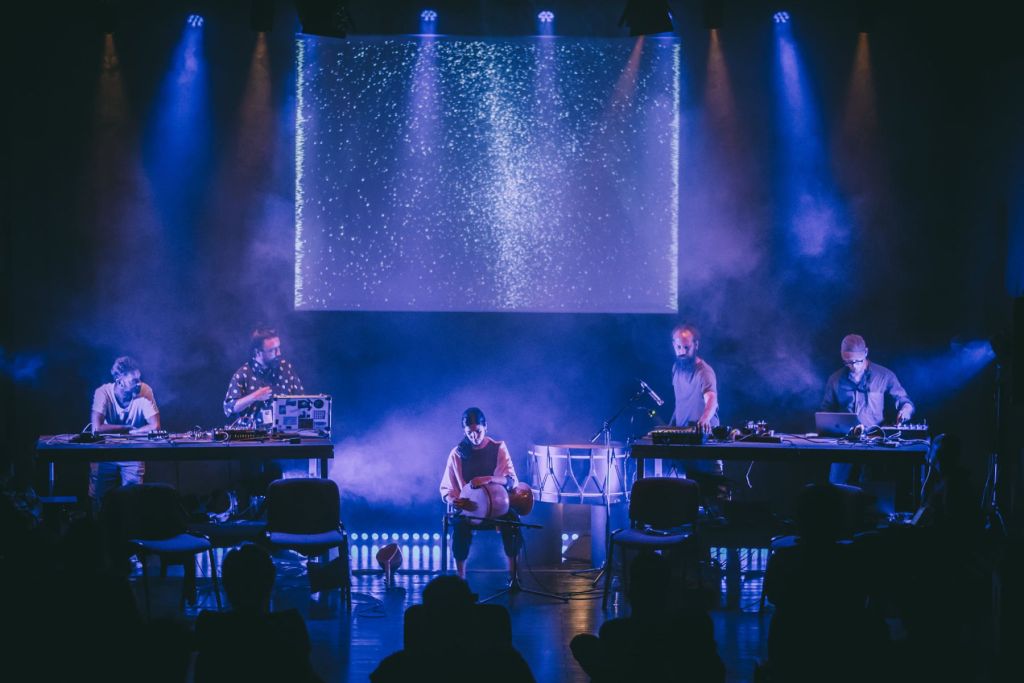Text by Miguel Isaza

A New Chronology
Among the many things that the Covid-19 pandemic has represented for humanity, there’s an issue that, although somewhat diffuse and polyvalent in its understanding, has become increasingly evident. An alteration of time, not only because of how it has shaped our routines but in a broader and more versatile sense, how has it altered our temporality perception as such.
More specifically, the way we conceive art and its processes in and towards time, understanding this variation of the temporality after the pandemic – not only from the standpoint of a radical chronological event that marks history and its impacts on various aspects of reality but also from other types of ideas of time: internal, personal, kairological, dreamlike or imaginary- the new forms of Chronos itself that emerge among the repercussions of such a deep and global process.
Now, how does this reflect our relationship to sound and sonic arts? How could that time be considered in terms of sound? Could we talk about a ‘post-pandemic’ sonority? What is our notion of listening beyond an event on a global scale that altered people’s daily dynamics and thinking? How are the rhythms of a pandemic reflected in terms of soundscapes, acoustic ecology, and electronic composition? How do these new temporalities affect how we create and feel through art?
These were the kind of issues that prompted the inception and creation of ‘New Chronologies of Sound’, a sound art project conceived by Hugo Branco -artistic director of the arts-residency-guest house-cultural-centre VIC // Aveiro Arts House in Aveiro, Portugal- and Jorge Barco – artist and curator of Lab3 sound art exhibition room at Modern Art Museum of Medellín, Colombia.
As Branco exposes in an essay dedicated to reflecting on the project: during 2020, numerous articles and studies that addressed how global soundscapes were impacted by the Covid-19 pandemic circulated throughout a multiplicity of sources, ranging from sound-related to other science and speciality publications-, all covering ideas of soundscapes metamorphosis, effects on public health, reaction to quieter environments and reduction of noise, among other factors, which revealed how different was the soundscape during this pandemic moment.
However, although by the time the lockdowns took place, there already were a lot of projects dedicated to recording, documenting and reflecting upon this pandemic landscape, Barco and Branco decided to go a step further and stimulate artists to think and create not only around the idea of the pandemic as such, but about the idea of time during this period, and as Branco expresses in a curatorial text: rather than generating yet another body of artworks dedicated to general, subjective reflections about Covid-19 and the lockdown, I took a special interest in what I identified to be a particular characteristic of this and other global events, which is the exceptional ability to alter our collective perception of time.


New chronologies of sound
At a glance, when one thinks about the ‘sound of the pandemic‘, some aspects are obvious, like the absence of the massive noise in the cities, replaced by ambulances, speakers, police sirens and media. Also, inside the houses, some people experienced new sounds as a result of the confinement with family members, while others felt the new silence of an imposed solitude. However, if we go further and introduce the question of time, many other perspectives arise.
And this is the case of New Chronologies of Sound, when posing the question of time on the sounds of the pandemics, led the curators to commission a series of subjective explorations from various artists around the world aimed at a reflection and research about how sound production, perception and understanding varied during the pandemic.
Something that began with the generation of a compilation of global field recordings but expanded into an interesting exploration leading to a series of masterclasses, workshops, an installation, a sound bank, and concluded with a printed text publication with essays, poems and notes from the artists.
The compilation brought together a diverse group of people from different latitudes: Lawrence English from Australia, Laura Romero from Spain, Matthew Herbert from the United Kingdom, BJ Nielsen from Sweden, Kyoka from Japan, Budhaditya Chattopadhyay from India, Antye Greie-Ripatti from Germany/Finland, Diana Combo, Gustavo Costa and Hugo Branco from Portugal, and Natalia Valencia and Miguel Isaza from Colombia, each contributing their own perspective on the topic.
In Chattopadhyay‘s artwork, for example, there is a deep reflection on the private landscape, the slowness of confinement and its relationship with the silence and solitude that they implied in his case: The sounds of everyday objects in the private landscape, such as the fans, refrigerators, flushes, and the solitary table-lamps, reverberate evermore to our ears as if sounding their presence in our lives poses them as talkative but grounding entourage. They are the true companions in this continuing and never-ending silence in self-quarantine and solitary confinement. Indecent Whispers is a dialogue with these everyday objects with a desire to reconnect to our lived environments for resolve and emancipation.”
In BJ Nielsen, biological and social time scales collided with crossed registers of recreational spaces, and parks and their variation from solitude and the closure of establishments and shops. Diana Combo explores the idea of the lack of time and the possibility of a non-local landscape to blur the identification of spaces and combine them, playing with notions of past, present and future, the idea of memory and the transience of moments.
Hugo Branco develops in his work a field recording exercise focused on the wind and the sound of gel dispensers in public spaces, playing with processing to create a texture that serves as a metaphor and critique of freedom and control. While Lawrence English offers field recordings of a rice field outside of Shizumi in Japan, showing the relationships between rural microenvironments that vary by season.
On the other hand, Laura Romero‘s piece works around the idea of energy transportation by sound waves to understand the behaviour of sound in the biosphere in terms of memory transformation. Natalia Valencia recorded the metamorphosis of soundscape, adding that We have turned off the deafening scream of the engines, we have locked ourselves in, (…) Outside, the birds sound again, and the wind and the vigour of the trees sound again. I dare to go through the glass that separates me, first with my eyes, then with my whole body. Outside, he finally heard the sound worthy of life”. Antye Greie-Ripatti reflects on human attempts to control nature, while Kyoka blends field recordings with electronic media, from birds to heartbeat-evoking bass.
In Miguel Isaza’s piece, there is a reflection to maintain the awareness of the present facing the turbulence of time, sonically reflected from the granular processing of the sounds of a hospital in contrast to a field recording of a forest. Finally, Matthew Herbert ventured to interpret the idea of listening to millions of audio events in an hour, from a drop of his blood hitting the edge of a metal body, multiplied into thousands of audible fragments.

Multichannel installation
All these works were exhibited for three months in 2022 in a multichannel fashion at Lab3, a room inside the Modern Art Museum of Medellin entirely dedicated to sound art. The pieces were also collected in several releases in vinyl and digital supports, along with a free-access soundbank with raw recordings.
During the time of the installation, there were also workshops, concerts and talks around the exhibition’s subject, which went deeper into the idea of sonic temporality and the pandemic soundscape, resulting in a very interesting set of reflections and thoughts ranging from the role of listening to the more technical side, like granular technology and the ever-changing possibilities of field recording.
From a research perspective, New Chronologies of Sound allowed us to reflect on the pandemics’ sonority, and the temporal variation from the more obvious perspectives poised around the exhibition and various layers of multidisciplinarity were evidenced and consolidated as suggestive and innovative methodologies for sound art sound studies.
Also, as critical devices for thinking about humanist and geological events, such as the cosmotechnics of sonic matter, the poetics of everyday listening, geological sonority and the terraforming of the soundscape, the capabilities of audio processing to redesign and deepen space, the speculative dimension of composition, the importance of field recording as a strategy of subversion and intimacy beyond mere documentation, the critical possibility of sound, its political dimension, its spiritual relevance.
And not only all these mentioned above, as the exhibition in Medellín reflected on many other layers, particularly in the pedagogical perspective and in the way we collectively rethink our collective or individual processes. The audience’s reception demonstrated the need many of us felt to stop and think about events as profound as lockdowns and the pandemic, per se, along with a marked parallel interest in activating the senses, closing our eyes and opening ourselves to an acousmatic consciousness as a way to relating to reality in another way.
From groups of children who went from going to school to listening to people more knowledgeable about sound art, sparking their imagination, and navigating listening in search of themselves and their own time. In the end, New Chronologies of Sound allowed us not only to think about the time of the pandemic but also to recognize and accept it through listening, actually generating a moment of healing where we were able not only to reason but also transform ourselves, not heal the virus as such but the impact of its presence. Stopping to listen is a way to rebuild ourselves and find our true time: the present.






